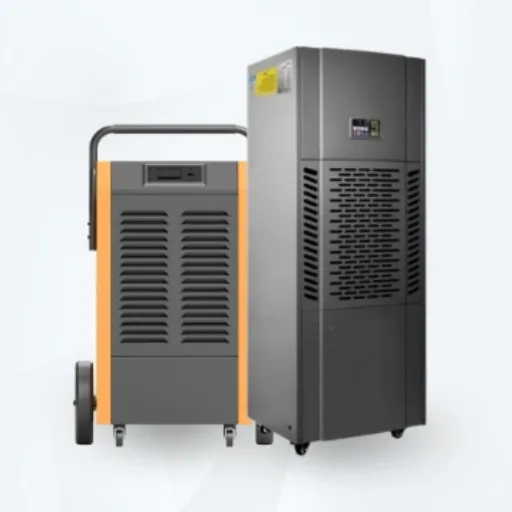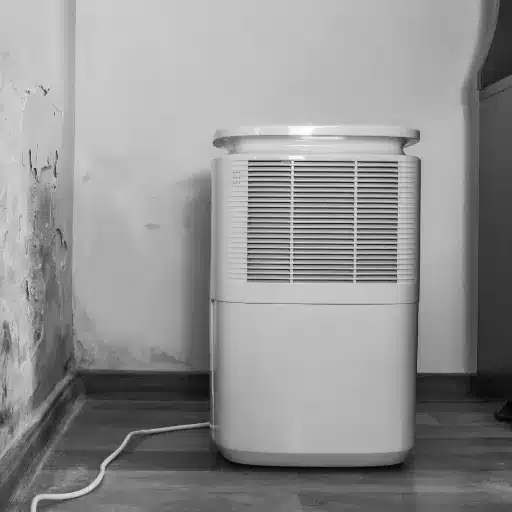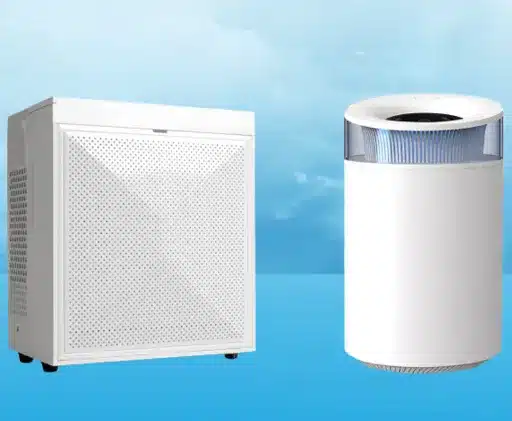When it comes to managing indoor comfort and air quality, two popular devices often come into play—air conditioners and dehumidifiers. While both serve essential roles in creating a pleasant living environment, they operate differently and can have varying impacts on your energy bills. If you’ve ever wondered which of these devices consumes more electricity and how they compare in terms of efficiency and functionality, this blog post has you covered. We’ll break down the key factors influencing their energy usage, help you understand what sets them apart, and guide you in making informed choices that align with your needs and budget.
How Does a Dehumidifier Work?
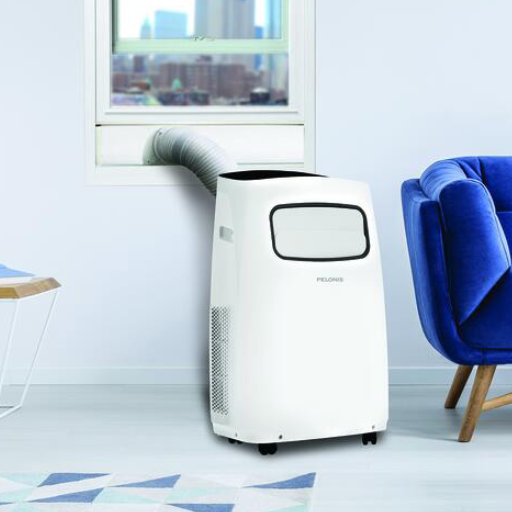
A dehumidifier works by removing excess moisture from the air to maintain a comfortable and healthy indoor environment. It pulls in damp air through a fan and directs it over cold coils, where the moisture condenses into water droplets and collects in a reservoir or drains away. The drier air is then warmed slightly and released back into the room. This process helps reduce humidity levels, preventing issues like mold growth, musty odors, and damage to furniture or walls.
Understanding the Dehumidifier Process
Modern dehumidifiers are designed with advanced technology to optimize performance while maintaining energy efficiency. Most units now feature built-in hygrometers, which accurately measure the humidity level in a space. These hygrometers enable the device to automatically adjust its operation to maintain an ideal indoor relative humidity level, generally recommended to be between 30% and 50% for comfort and health.
Energy-efficient models utilize low-power compressors and eco-friendly refrigerants to minimize environmental impact while lowering energy consumption. For example, some units are equipped with Energy Star certifications, indicating they use up to 30% less energy compared to non-certified models. Additionally, smart dehumidifiers have emerged, allowing users to monitor real-time humidity levels and control settings via mobile applications, making the process more dynamic and convenient.
For larger spaces, high-capacity dehumidifiers can extract up to 70 pints of moisture per day, ensuring effective dehumidification for basements, warehouses, or other moisture-prone areas. Many of these devices also include features like auto shut-off, continuous drainage options, washable air filters, and timers, which enhance usability and simplify maintenance. These innovations make dehumidifiers an essential tool for maintaining indoor air quality and protecting your home or office from excessive humidity.
How Dehumidifiers and Air Conditioners Differ
While dehumidifiers and air conditioners may seem similar at first glance, given their shared ability to tackle humidity, their primary functions and mechanisms differ significantly. Dehumidifiers are specifically designed to remove moisture from the air to maintain optimal humidity levels, usually between 30-50%. They extract water vapor from the air via a refrigeration process, collecting the condensed moisture in a tank or expelling it through a drainage system. This process helps prevent mold, mildew, and allergens, creating a healthier indoor environment.
Air conditioners, on the other hand, focus on cooling spaces by removing heat from indoor air and cycling cooler air back into the room. While air conditioning units also reduce humidity as a byproduct of the cooling process, their primary purpose is temperature control rather than managing moisture levels. For instance, a high-efficiency air conditioner can reduce indoor humidity to some extent, but it cannot achieve the precise dehumidification targets that a dedicated dehumidifier can.
From an energy standpoint, dehumidifiers typically consume less electricity compared to air conditioners since they are not tasked with lowering temperatures. Additionally, air conditioners require higher cooling capacity (measured in BTUs) to function effectively in large spaces, which can lead to significant energy consumption over time.
For specific applications, such as basements or areas with persistent high humidity, dehumidifiers offer a targeted solution with devices capable of extracting up to 90 pints of moisture daily. Air conditioners, however, are better suited for overall climate control in living spaces, keeping occupants comfortable during hot and humid seasons. Understanding these distinctions can help you choose the right device based on your needs and environmental conditions.
Impact on Moisture from the Air
The removal of excess moisture from the air is critical for maintaining an optimal indoor environment, particularly in regions prone to high levels of humidity. Research shows that ideal indoor relative humidity levels range between 30% and 50% to prevent mold growth, dust mites, and other allergens. Dehumidifiers play a significant role in achieving this balance, with modern units capable of removing substantial amounts of moisture—typically ranging from 20 to over 90 pints per day, depending on the size and capacity of the device.
On the other hand, air conditioners not only reduce temperature but also extract moisture during their cooling process. A standard air conditioner can lower humidity effectively in spaces under routine conditions, although its primary focus remains temperature regulation. Studies suggest that combining dehumidification systems with air conditioners in particularly humid climates can lead to more comprehensive air quality control, improving comfort and reducing strain on HVAC systems.
By actively regulating indoor humidity, these technologies not only curb potential health hazards from excessive dampness but also extend the longevity of furniture, electronics, and structural components sensitive to moisture damage. This underlines the importance of assessing both environmental needs and technological capabilities when choosing solutions for moisture management indoors.
How Does an Air Conditioner Work?

An air conditioner works by cooling indoor air through a cycle of heat transfer. It utilizes a refrigerant, which absorbs heat from inside the space and releases it outdoors. The main components involved are the compressor, condenser, evaporator, and fans. The evaporator coil cools the air by passing it over the refrigerant, which absorbs the heat. The warm refrigerant is then pumped to the condenser unit outside, where it releases the heat into the outdoor air. This process keeps the indoor environment cool and comfortable, while fans ensure steady airflow to maintain the desired temperature.
Functionality of Air Conditioning Systems
Modern air conditioning systems have seen significant advancements in efficiency, performance, and environmentally friendly features. One of the most critical improvements is the integration of energy-efficient technologies like inverter-driven compressors, which allow the system to adjust the cooling output dynamically instead of operating at a constant speed. This innovation reduces energy consumption by up to 30-50% compared to traditional systems.
Additionally, air conditioners now utilize more environmentally conscious refrigerants, such as R-32 and R-410A, which have a lower global warming potential than older options like R-22. This shift enhances performance while reducing the environmental impact of cooling systems. Smart thermostats and IoT (Internet of Things) integration further enhance functionality by giving users control over temperature and scheduling through mobile applications. Many systems today are equipped with sensors that optimize cooling by detecting room occupancy or even adjusting airflow direction.
Another notable feature is the implementation of advanced filtration systems, such as HEPA (High-Efficiency Particulate Air) filters or UV light technology, which improve indoor air quality by capturing allergens, dust, and airborne microbes. According to industry research, improved air purification can reduce airborne contaminants by over 99%, contributing to a healthier indoor environment. These innovations are making air conditioning not only a tool for comfort but also a step toward sustainable living and enhanced well-being.
The Role of Cool Air Production
Cool air production plays a vital role in enhancing comfort, maintaining productivity, and protecting health, particularly during periods of excessive heat. Modern air conditioning systems are designed to regulate indoor temperatures efficiently, creating optimal living and working environments. According to recent energy efficiency studies, the use of advanced cooling technologies, such as variable refrigerant flow (VRF) systems, has led to a documented reduction in energy consumption by up to 25% compared to traditional units.
Additionally, cool air production is crucial for sensitive industries like healthcare, food storage, and data centers, where temperature regulation is essential for preserving materials and preventing equipment malfunction. For instance, data centers rely on precision cooling systems to maintain temperatures below 80°F, ensuring that servers operate without interruptions. Furthermore, studies estimate that heatwaves result in a 13% decrease in workplace productivity; thus, effective cooling solutions support better performance and well-being.
The combination of innovative cooling systems and energy-efficient models marks a significant step forward in reducing environmental impact while maintaining advanced cooling capabilities, making it integral to both comfort and sustainability.
Comparison: Air Conditioner vs Dehumidifier
Air conditioners primarily cool spaces while also reducing humidity, whereas dehumidifiers focus solely on removing excess moisture without cooling.
|
Key Point |
Air Conditioner |
Dehumidifier |
|---|---|---|
|
Function |
Cooling & humidity |
Removes moisture |
|
Temperature |
Lowers |
Slightly raises |
|
Humidity |
Limited control |
Precise control |
|
Energy Use |
Higher |
Lower |
|
Cost |
Higher upfront |
Lower upfront |
|
Best For |
Hot climates |
Humid spaces |
What Are the Energy Efficiency Differences?
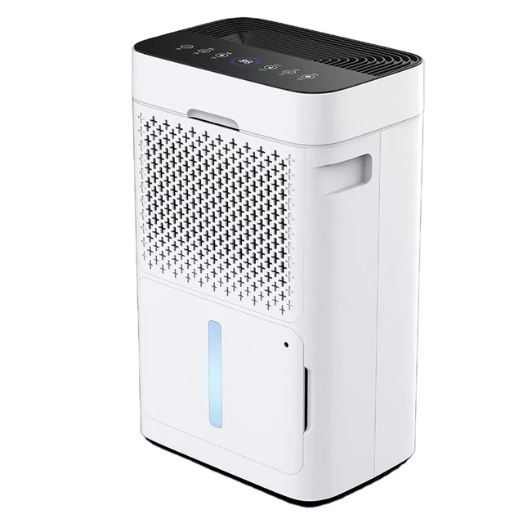
Air conditioners and dehumidifiers differ significantly in terms of energy efficiency based on their primary functions. Air conditioners consume more energy as they both cool and dehumidify the air simultaneously, requiring additional power to lower room temperature. Conversely, dehumidifiers are generally more energy-efficient because their sole purpose is to extract moisture from the air, which requires less power compared to cooling. For moderate humidity control, dehumidifiers are a cost-effective option, while air conditioners are better suited for situations needing both cooling and dehumidification.
Which Uses Less Electricity?
When evaluating electricity consumption, dehumidifiers generally come out ahead in terms of energy efficiency compared to air conditioners. A standard dehumidifier typically uses between 300 to 700 watts per hour, depending on its size and capacity, whereas an air conditioner can consume anywhere from 900 to 3,500 watts per hour for a typical window or portable unit. The significant difference stems from their operating mechanisms; air conditioners perform dual functions (cooling and dehumidifying), which demands more power, while dehumidifiers focus solely on removing moisture from the air.
For example, running a medium-sized dehumidifier for 10 hours would consume approximately 3–7 kWh of electricity, costing around $0.36–$0.84 at an average electricity rate of $0.12/kWh in the U.S. On the other hand, running a window air conditioner for the same duration could result in energy usage of 9–35 kWh, translating to a cost of $1.08–$4.20. This showcases that for purely managing humidity levels, dehumidifiers not only use less electricity but also offer a more economical choice for long-term energy savings.
However, in situations where both cooling and dehumidification are required, such as in hot and humid climates, air conditioners might still be the more practical option despite their higher energy consumption. Understanding specific needs and usage scenarios is key to making the most energy-efficient decision.
Evaluating Energy Consumption in Both Devices
When comparing the energy consumption of air conditioners and dehumidifiers, it’s essential to look at their operational efficiency under different circumstances. Air conditioners generally consume between 500 to 1,500 watts per hour, depending on their size, model, and cooling capacity. On the other hand, dehumidifiers are typically more energy-efficient, using around 300 to 700 watts per hour for most standard residential models. This difference is primarily due to the designs of the devices; air conditioners are engineered to both lower temperatures and remove humidity, while dehumidifiers focus solely on the latter.
Further studies highlight that using a dehumidifier can help significantly reduce the workload on an air conditioner by maintaining lower humidity levels, creating a more comfortable indoor environment without requiring as much cooling power. For example, maintaining relative indoor humidity at 50% can prevent the feeling of heaviness associated with higher humidity, allowing for potentially higher temperature settings on an air conditioner, which reduces overall energy use.
Energy Star-rated devices can further improve efficiency for both types of equipment. Modern dehumidifiers with energy-saving technologies consume up to 30% less electricity compared to older models. Similarly, air conditioners with inverter technology dynamically adjust their power to reduce unnecessary consumption, significantly lowering their average electricity usage over time.
Ultimately, the choice between these devices—and their respective energy consumption—boils down to the consumer’s needs and environmental conditions. Using each device strategically in tandem can optimize energy use, particularly in climates where both cooling and dehumidification are essential.
Impact on Electricity Bills
The impact of cooling appliances on electricity bills can be significant, especially when accounting for prolonged usage during extreme weather conditions. Air conditioners tend to consume the highest amount of energy among cooling and dehumidification devices. According to industry data, a standard air conditioner typically uses between 500 and 1500 watts per hour, depending on the size and energy efficiency rating of the unit. This can lead to electricity costs ranging from $60 to $200 per month in peak seasons.
Dehumidifiers, on the other hand, are generally more energy-efficient, consuming between 300 and 700 watts per hour. Modern dehumidifiers with energy-saving features can cost less than $50 a month even when operated daily, making them an economical alternative to manage indoor humidity levels. Nevertheless, pairing a dehumidifier with an air conditioner can further optimize overall energy consumption, as reducing indoor moisture levels allows an air conditioner to operate more efficiently.
Upgrading to modern, energy-efficient devices, such as those certified by ENERGY STAR, can significantly reduce electricity bills. For instance, inverter air conditioners have been shown to lower energy usage by 30%-50% compared to traditional fixed-speed models. Similarly, high-efficiency dehumidifiers with smart humidity controls can adjust operation dynamically, conserving energy without compromising performance. By selecting the right combination of devices and using them smartly, households can achieve notable savings while maintaining optimal comfort.
How Do Dehumidifiers and Air Conditioners Affect Indoor Air Quality?
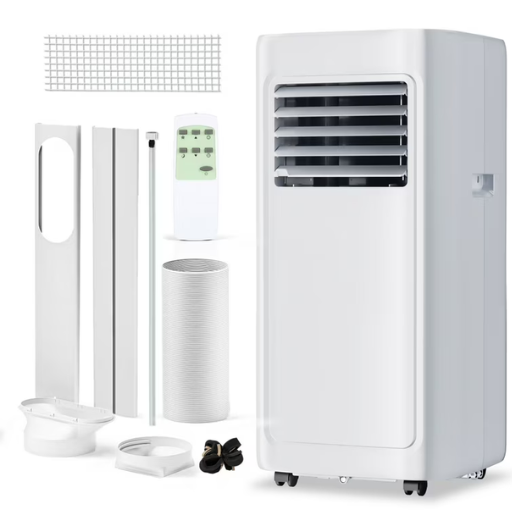
Dehumidifiers and air conditioners play a significant role in improving indoor air quality. Dehumidifiers help by reducing excess moisture in the air, which can prevent the growth of mold, mildew, and dust mites—common contributors to indoor allergens. Air conditioners, on the other hand, regulate temperature and often come with filters that trap dust, pollen, and other airborne particles. Together, these devices maintain a healthier, more comfortable indoor environment, especially in regions with high humidity or during warm seasons.
Improving Humidity Levels
Maintaining ideal humidity levels—typically between 30% and 50%—is crucial for creating a comfortable and healthy indoor environment. When humidity is too high, it fosters the growth of mold, mildew, and bacteria, which can lead to respiratory issues and exacerbate allergies. On the other hand, overly dry air can cause skin irritation, dryness in the throat and nasal passages, and even damage to wooden furniture and flooring.
Studies indicate that proper humidity control can significantly reduce airborne viral transmissions, as viruses tend to thrive in extremely dry or overly humid environments. For instance, maintaining optimal humidity in the home can enhance respiratory health by keeping airways moist and reducing irritation.
Using a combination of dehumidifiers and humidifiers depending on seasonal changes or geographic conditions can make a significant difference. Advanced devices today also feature smart humidity sensors, enabling homeowners to monitor and adjust levels automatically, ensuring continual optimization. By investing in devices that consistently regulate humidity, individuals can enhance air quality, protect their homes from humidity-related wear, and improve overall well-being.
Effects on Indoor Air and Comfort
Proper humidity levels play a critical role in maintaining both air quality and overall comfort within living spaces. The ideal indoor humidity range is often considered to be between 30% and 50%, as this range helps limit the growth of allergens like mold and dust mites, which thrive in excess moisture. According to recent studies, maintaining this balance can significantly reduce respiratory issues and allergies, especially for vulnerable groups such as children and the elderly.
On the other hand, low humidity can dry out the skin, throat, and nasal passages, contributing to discomfort and an increased susceptibility to colds and infections. It can also cause structural damage to wooden furniture, floors, and walls, as extended dryness leads to cracking and splitting. Integrating modern solutions, such as smart humidifiers and dehumidifiers, allows homeowners to monitor and adjust humidity levels in real-time, ensuring a healthier indoor environment.
Furthermore, maintaining optimal humidity boosts comfort by preventing excess perspiration during warm weather and reducing dryness during colder months. Research shows that even a 10% deviation from the recommended range can lead to noticeable discomfort and a drop in perceived air quality. Integrating these insights into home management fosters not only long-term comfort but also supports better health and energy efficiency.
Addressing High Humidity and Excess Moisture
High humidity and excess moisture in indoor spaces can lead to a variety of issues ranging from structural damage to health risks. When humidity levels rise above 60%, conditions become favorable for mold and mildew growth, which not only damages surfaces and furnishings but can also trigger respiratory problems. Prolonged exposure to such conditions may exacerbate allergies and asthma symptoms, especially in sensitive individuals. Additionally, excessive humidity can encourage the proliferation of dust mites, which thrive in damp environments.
From a structural standpoint, excess moisture can weaken building materials over time, such as wood, drywall, and insulation, leading to costly repairs. For example, studies on interior environments show that increased moisture can reduce the lifespan of wooden structures by 20%-30% if not properly addressed. A proactive approach to managing indoor humidity is critical to preventing these problems.
Modern solutions, such as dehumidifiers and ventilation enhancements, offer effective ways to control high humidity. Dehumidifiers remove excess moisture from the air, keeping relative humidity within the ideal range of 30%-50%. Advanced models, equipped with smart sensors, can automatically adjust performance to maintain optimal levels efficiently. Additionally, ensuring proper ventilation in areas like kitchens, bathrooms, and basements plays a pivotal role in preventing moisture buildup. For instance, exhaust fans in bathrooms can reduce humidity levels by up to 25% when used consistently after showers. By combining technology and good practices, homeowners can protect their living environments and ensure long-term comfort and safety.
Which Is Cheaper to Run?
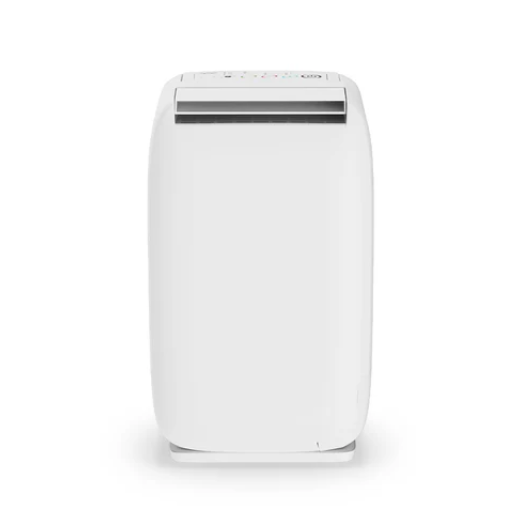
When comparing costs, the cheaper option to run will depend on the specific type and efficiency of the system in question. For example:
- Central AC Systems generally cost more to operate due to their energy demands and the need to cool an entire home.
- Stand-alone Units such as window or portable air conditioners are typically cheaper to run, as they are designed to cool smaller spaces and consume less energy overall.
To minimize costs, prioritize energy-efficient models with a high Energy Efficiency Ratio (EER), use programmable thermostats, and run systems only when necessary. Always consider the size of the area being cooled to ensure the most economical choice.
Cost Analysis: Dehumidifier vs Air Conditioner
When comparing the costs of running a dehumidifier versus an air conditioner, it’s essential to analyze both energy consumption and operational requirements. Dehumidifiers typically use less electricity than air conditioners. On average, dehumidifiers consume between 300 to 700 watts of power per hour depending on their capacity, while air conditioners, particularly central or larger units, can range from 1,200 to 5,000 watts per hour.
Dehumidifiers are cost-effective for reducing humidity without lowering the temperature significantly, making them ideal for cooler seasons or regions with humid climates. Air conditioners, on the other hand, serve the dual purpose of cooling the air and removing moisture, but their higher energy consumption can lead to increased utility bills.
For example, running a typical dehumidifier for 10 hours a day might cost approximately $1 to $1.50, depending on energy rates and the unit’s wattage. Conversely, a 3,000-watt air conditioner operating for the same duration could cost $3 to $4 daily. Over a month, this disparity becomes significant, particularly in high-use periods.
Additionally, maintenance costs should be considered. Dehumidifiers generally require less maintenance, with occasional cleaning of filters and reservoir emptying. Air conditioners often necessitate more extensive care, including regular servicing, refrigerant refills, and filter replacements.
For small spaces or targeted humidity control, dehumidifiers offer a budget-friendly advantage. However, for large, enclosed spaces that demand temperature regulation and greater comfort, air conditioners may justify their higher operational cost despite the increased energy usage.
Long-Term Energy Savings
When it comes to long-term energy savings, I carefully consider the specific needs of my space and choose the appliance that aligns with those requirements. For small areas where managing humidity is the primary goal, a dehumidifier is both cost-effective and energy-efficient. However, if I need to maintain a stable temperature alongside controlling humidity in a larger space, I find that investing in an energy-efficient air conditioner, despite the higher upfront and operational costs, offers greater comfort and value over time.
Considerations for Portable Air Conditioner Usage
When using a portable air conditioner, I always prioritize proper placement to ensure efficiency, usually near a window for easy venting and away from obstructions. I pay close attention to the unit’s BTU rating to match the size of the space I want to cool, as an undersized or oversized unit can impact performance and energy use. Additionally, I make it a habit to clean or replace filters regularly to maintain good air quality and prevent the system from overworking, which could increase energy consumption.
Reference Sources
-
Improving the Energy Efficiency of Dehumidification Technology – Discusses energy efficiency in dehumidification systems.
-
Air-Conditioning and Energy Demand – Examines electricity usage in air conditioning systems.
Frequently Asked Questions (FAQs)
Q: How do an air conditioner and a dehumidifier differ in terms of electricity consumption?
A: An air conditioner generally consumes more electricity than a dehumidifier. This is because air conditioners cool the air and also remove humidity, requiring more energy. Dehumidifiers use less energy since they primarily focus on removing moisture from the air without cooling it.
Q: Does a dehumidifier or an air conditioner consume more energy when dehumidifying?
A: When it comes to dehumidifying, a dehumidifier is more energy-efficient than an air conditioner. This is because dehumidifiers use less energy for removing moisture from the air compared to the dual function of cooling and dehumidification performed by air conditioners.
Q: Can using a dehumidifier reduce energy consumption compared to running an air conditioner?
A: Yes, using a dehumidifier can reduce energy consumption, especially in conditions where cooling is not necessary. Dehumidifiers use less energy to remove moisture, which can make a space feel cooler without the need for additional cooling from an air conditioner.
Q: How does the size of your home affect the energy consumption of air conditioners and dehumidifiers?
A: The size of your home significantly impacts energy consumption. Larger spaces require air conditioners and dehumidifiers with greater capacity, leading to higher energy costs. Choosing the correct size for your space will help use less energy efficiently.
Q: Are central air conditioning systems more energy efficient than using separate units for cooling and dehumidification?
A: Central air conditioning systems can be more energy efficient in larger homes as they provide consistent cooling and dehumidification throughout the home. However, in smaller spaces or specific areas, using a dehumidifier and an air conditioner separately may be more cost-effective.
Q: How do different types of dehumidifiers impact energy consumption?
A: Different types of dehumidifiers, such as refrigerant and desiccant dehumidifiers, have varying energy consumption rates. Refrigerant dehumidifiers are generally more energy-efficient in warm climates, while desiccant dehumidifiers can be more effective in cooler environments, though they may use more energy.
Q: What role does humidity play in the energy consumption of air conditioners?
A: High humidity levels can cause air conditioners to work harder, increasing energy consumption. By removing humidity from the air, air conditioners can cool more efficiently. However, using a dehumidifier to manage humidity can reduce the load on an AC unit, potentially lowering energy costs.
Q: How does the operation of a dehumidifier affect the temperature of a room?
A: A dehumidifier removes moisture from the air, which can make a room feel cooler even though it does not actually decrease the temperature. By reducing the humid air, the comfort level improves, potentially reducing the need for an air conditioner.
Q: Is it more energy-efficient to run a dehumidifier alongside an air conditioner?
A: Running a dehumidifier alongside an air conditioner can be more energy-efficient by allowing the air conditioner to work less hard. By removing excess humidity, the dehumidifier helps the air conditioner cool the space more effectively, potentially reducing energy costs.
Q: How does using outside air impact the energy efficiency of dehumidifiers and air conditioners?
A: Using outside air, particularly when it’s cooler and less humid, can improve the efficiency of both dehumidifiers and air conditioners. Introducing cooler, less humid outside air can reduce the workload on these devices, leading to lower energy consumption.

